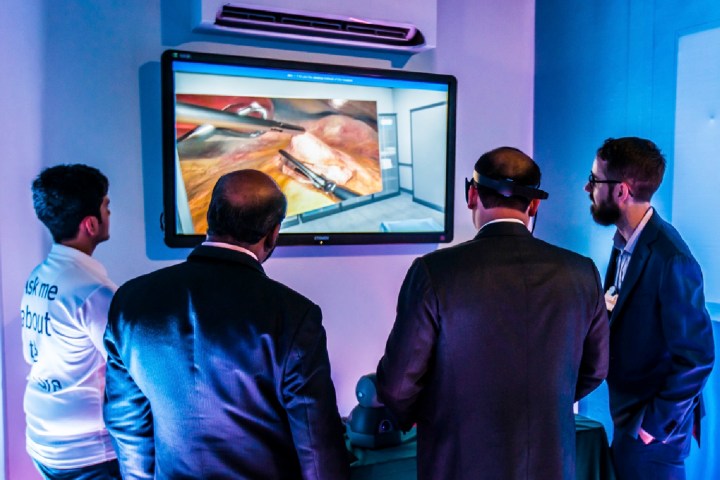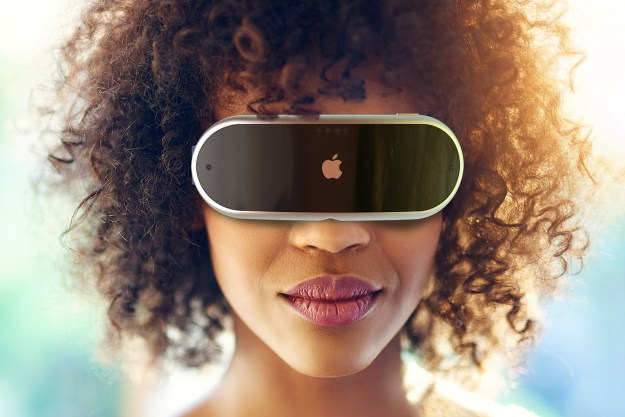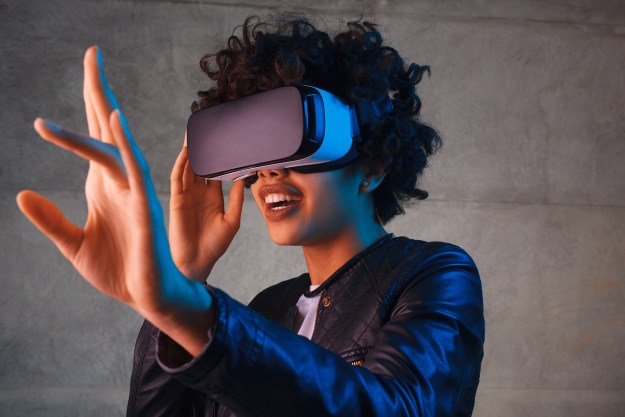
When surgeons are trained to perform a procedure, the old rule of thumb is “watch one, do one, teach one.” It’s a pretty unforgiving learning curve, which requires a big leap on the part of the trainee surgeon, and isn’t wholly reassuring to patients, either. I’m about to perform a sleeve gastrectomy, a weight-loss procedure in which the size of the stomach is reduced to a fraction (around 15 percent) of its original size. The problem is that I’ve never watched one. I’m diving straight into the “doing” part. Fortunately, that is not quite such an issue since the sleeve gastrectomy operation is a training simulation taking place in virtual reality.
It’s part of a new haptic VR system created by the London-based company Fundamental VR, demonstrated over the weekend as part of the Global Education and Skills Conference in Dubai, United Arab Emirates. Officially launching later this year, the tech uses cutting-edge haptic and VR technology to train the next generation of lifesaving surgeons. Or, in this case, a Digital Trends journalist.
Fundamental’s “Fundamental Surgery” employs off-the-shelf hardware and software that will run on most modern computers. In the case of this demo, that translated to an Acer Windows Mixed Reality VR headset and touch controller built by the company 3D Systems, which uses three motors to provide resistance. With this technology, the team has then built multiple training scenarios which replicate not just the visuals of an operating theater setup, but also the physical sensations that go along with the operation.

For the sleeve gastrectomy demo, this means that as you lift the stomach and start to cut away at it, you feel both its weight and the force of the cutting action. As Fundamental CEO and co-founder Richard Vincent told Digital Trends, it allows trainee surgeons to feel what they’re doing — and to do it over if they are struggling.
“If there’s a part of the operation you have difficulty with, you can repeat that step again and again and again,” Vincent said. “It means you could practice an operation 500 times if you wanted. There’s just no other way to do that. A person will typically make consultant based on 40 procedures.”
Vincent said that the technology is currently being targeted at both industry and also training hospitals. It has already racked up some big-name support from places like the Mayo Clinic, Duke University, Stanford University, and others in the U.S., as well as Guy’s Hospital, King’s College Hospital and more in the U.K.
Let’s hope it works well as a training tool; there is even a chance the surgeon who will operate on you in the future will have trained with it.
Editors' Recommendations
- HTC aims to turn your carpool into a VR roller coaster
- You won’t be taking Microsoft’s HoloLens 3 into the metaverse
- This futuristic haptic vest should make virtual reality feel more realistic
- The future of immersive VR? ‘Chemical haptics’ applied to your skin
- Pimax’s 12K QLED VR headset wants to take virtual reality to the next level


